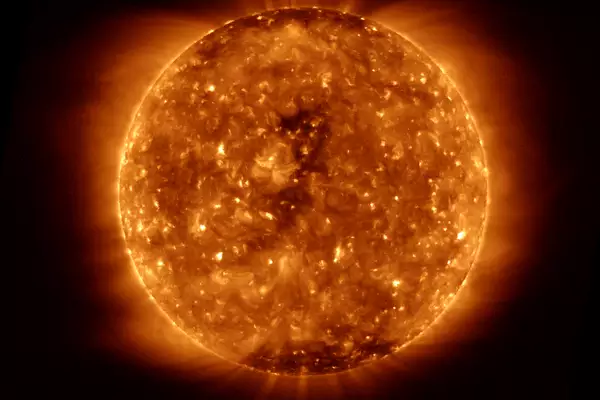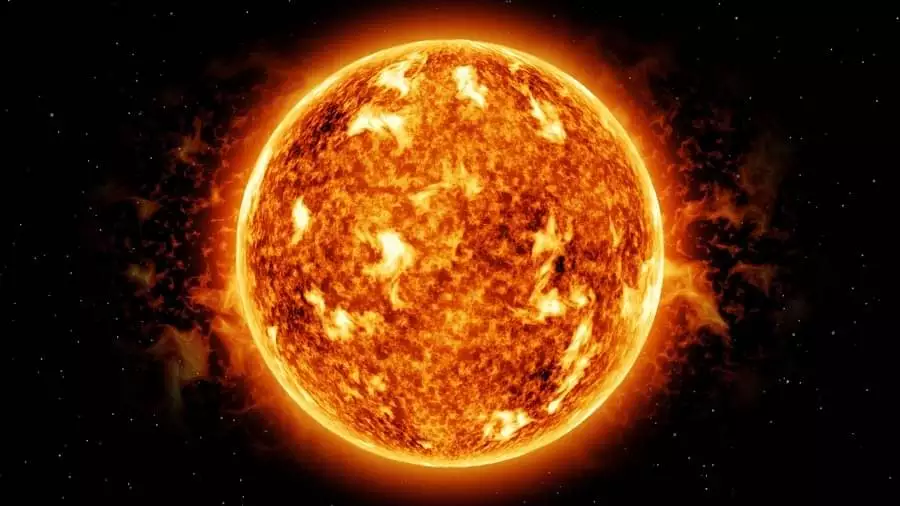Indian Astronomers recently identified a new method of predicting amplitude of upcoming Solar cycles using 100 years of solar data from the Kodaikanal Solar Observatory.
Key Findings of the Discovery:
- Researchers from the Indian Institute of Astrophysics (IIA), Bengaluru, used over 100 years (9 solar cycles) of solar chromospheric images from the Kodaikanal Solar Observatory.
- Kodaikanal Solar Observatory is one of the oldest solar observatories in the world, formed in 1899 on the southern tip of the Palani Hills, Tamil Nadu.
- They discovered that the width of supergranular cells on the solar surface during solar minima correlates with sunspot numbers in subsequent cycles.
- Supergranulations are large convective cells on the Sun’s surface, with borders called supergranular lanes.
- These lanes are about 30,000 km in size, with thickness varying across the solar cycle.
- The width of supergranular lanes near the mid-latitudes during sunspot cycle minima strongly correlates with the amplitude of the subsequent cycle.
- This correlation is weak or insignificant at other times in the solar cycle, as lane thickness during other phases does not predict the next cycle’s strength.
- This method provides a straightforward way to predict the next sunspot cycle’s strength about 4–5 years in advance.
About Solar Cycles:
- The solar cycle is an approximately 11-year cycle during which the Sun’s magnetic activity increases and decreases.
- This cycle is characterized by variations in the number of sunspots, solar flares, and other solar phenomena.
- It affects space weather and has significant implications for satellite operations, communication systems, and even Earth’s climate.
Phases of the Solar Cycle
- Solar Minimum is the period when the Sun’s magnetic activity is at its lowest, and marks the beginning and end of a solar cycle.
- Solar Maximum is the period when the Sun’s magnetic activity is at its highest, and many sunspots, solar flares, and coronal mass ejections (CMEs) occur.
- Transition Phases lie between the solar minimum and maximum, where the number of sunspots and solar activity gradually increase or decrease.
Amplitude of a Solar Cycle
- It refers to the maximum number of sunspots observed during the solar maximum phase.
- This is a measure of the intensity of the solar cycle.
- It is dependent on the following factors:
- Solar Magnetic Field: Stronger magnetic fields can result in a higher number of sunspots, leading to a higher amplitude.
- Solar Dynamo: The process that generates the Sun’s magnetic field through the movement of conductive materials inside the Sun.
Ref: Source
| UPSC IAS Preparation Resources | |
| Current Affairs Analysis | Topperspedia |
| GS Shots | Simply Explained |
| Daily Flash Cards | Daily Quiz |
Frequently Asked Question:
What are supergranular cells?
Supergranular cells are large convective patterns on the Sun’s surface with borders known as supergranular lanes. Their size and thickness provide insights into solar activity, which is crucial for predicting future solar cycles.
What does the amplitude of a solar cycle refer to?
It refers to the maximum number of sunspots observed during the solar maximum phase. It measures the intensity of the solar cycle.
What is a solar cycle?
A solar cycle is an approximately 11-year period during which the Sun’s magnetic activity increases and decreases. It is characterized by variations in the number of sunspots, solar flares, and other solar phenomena.



